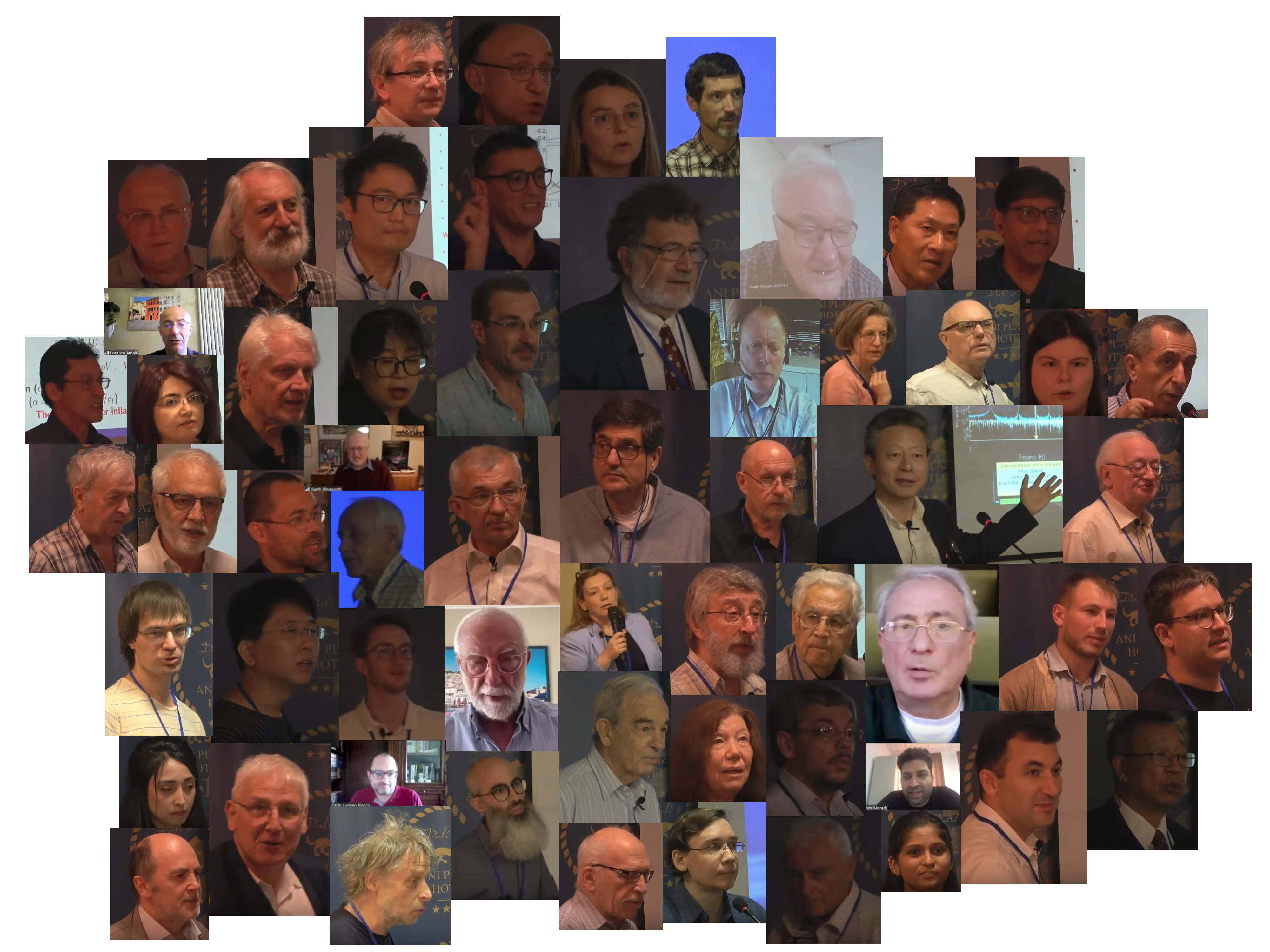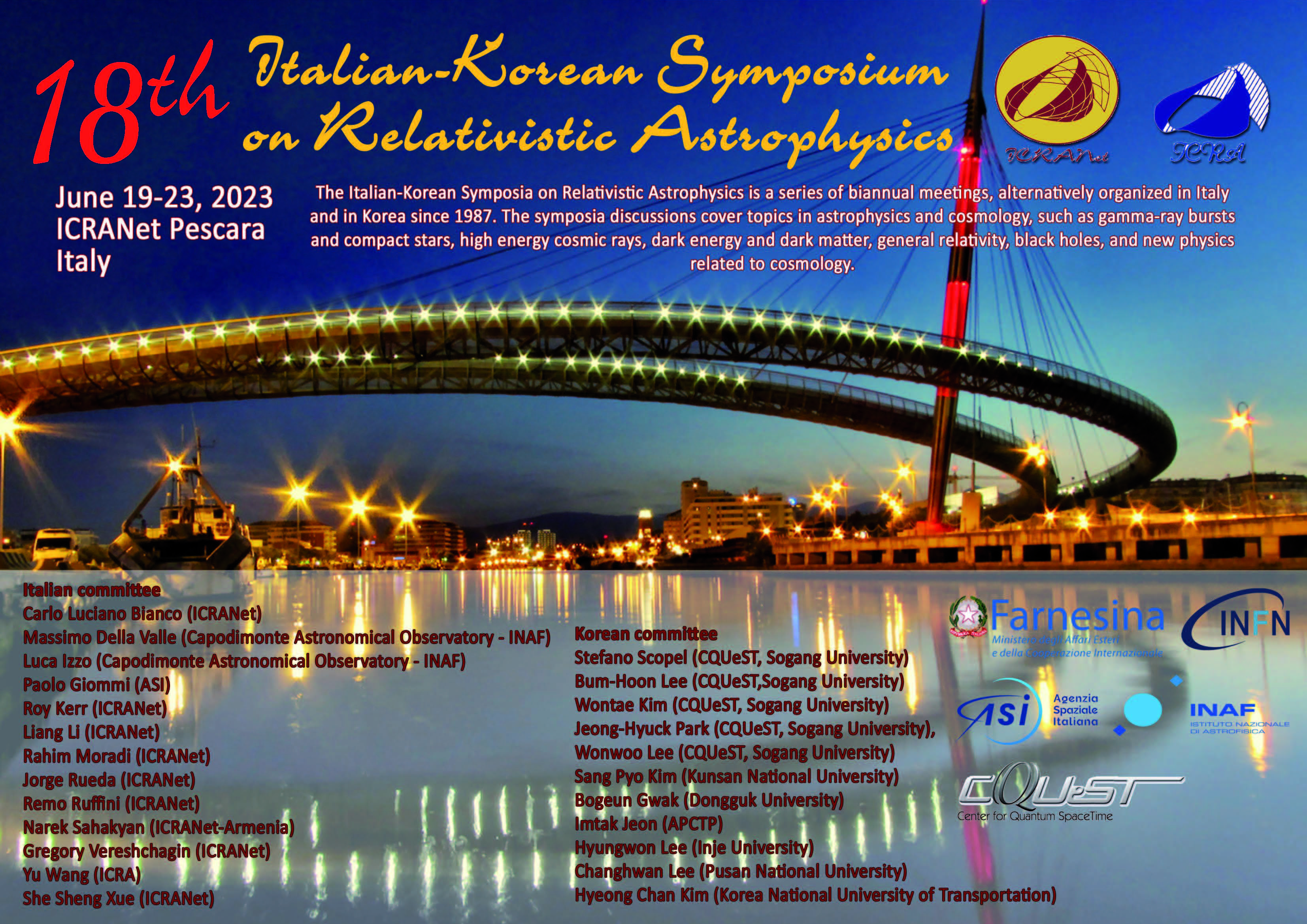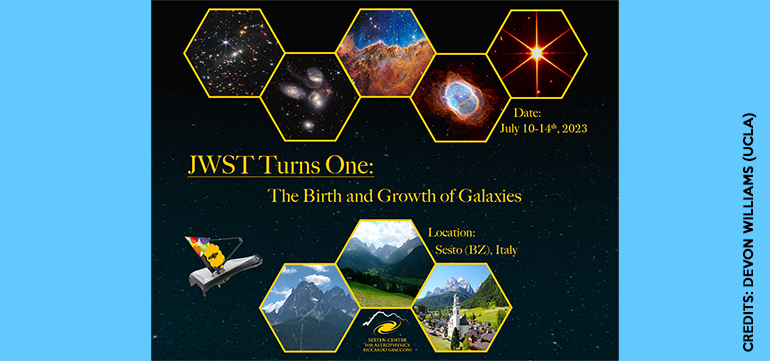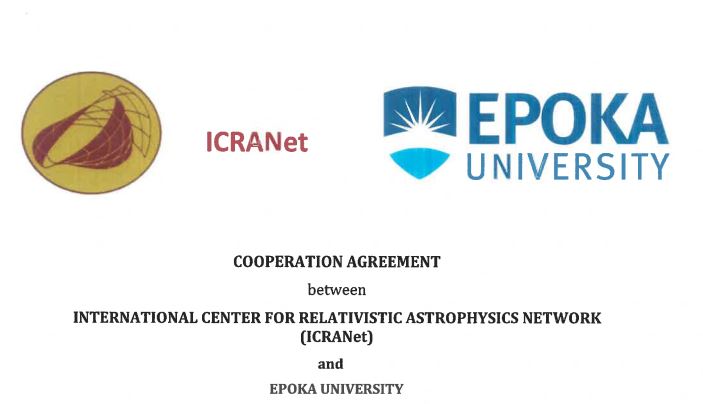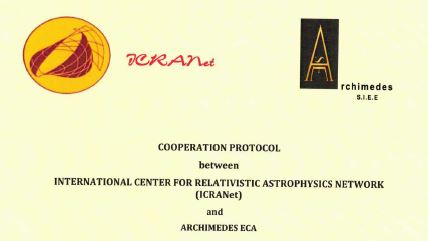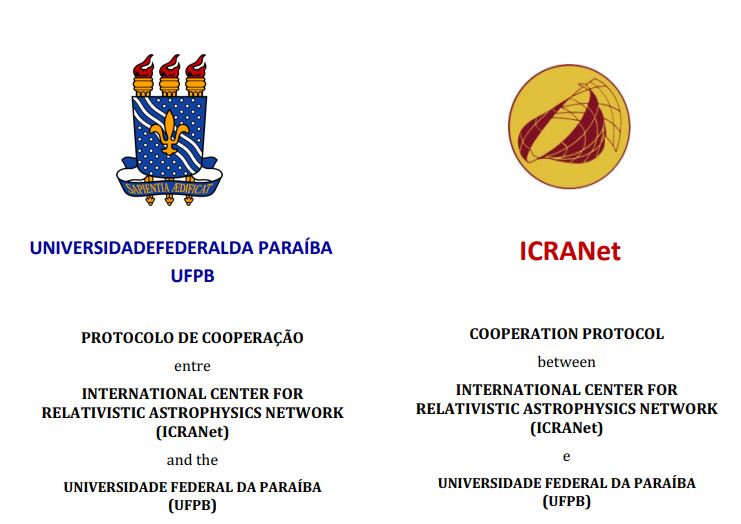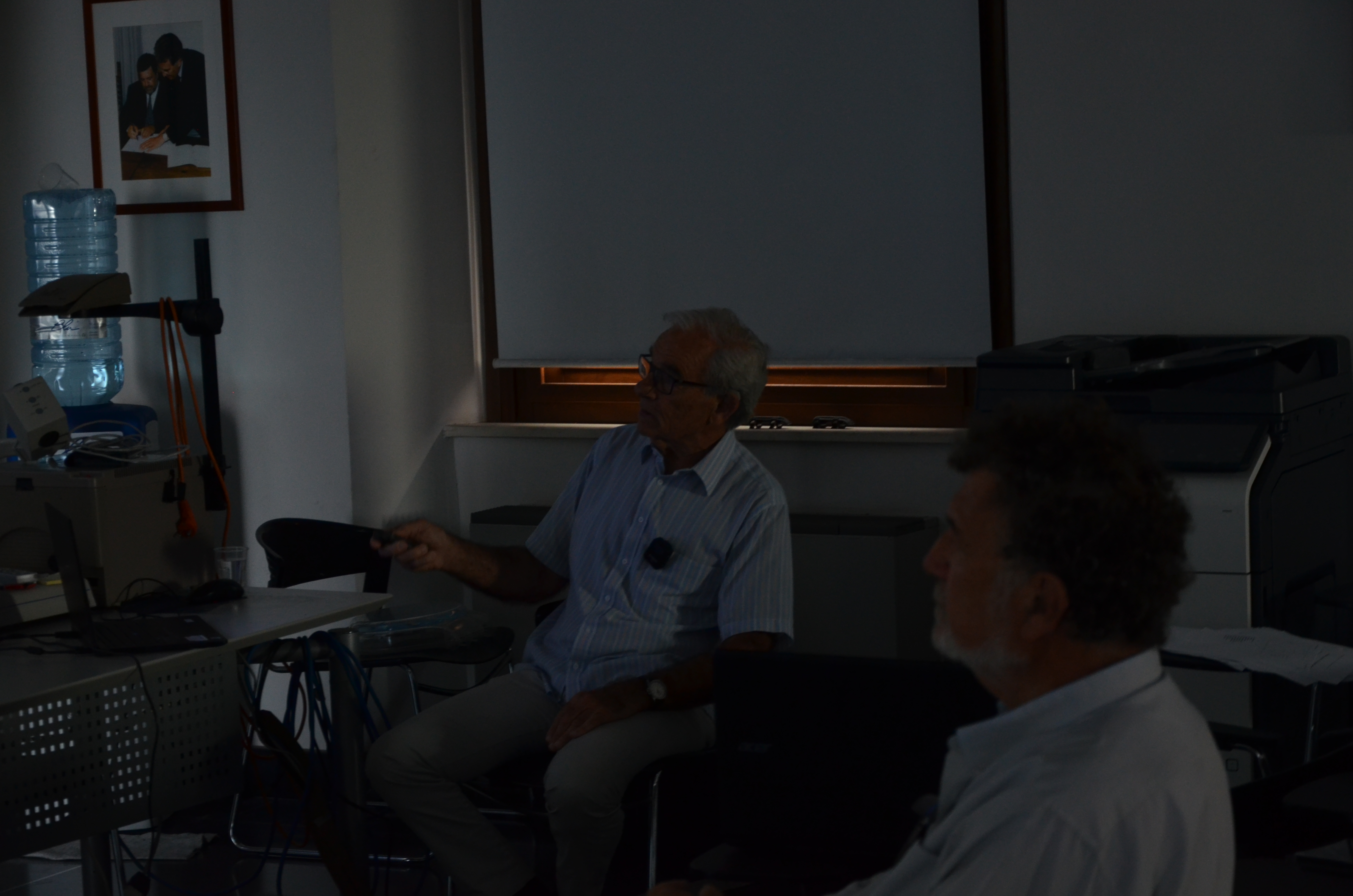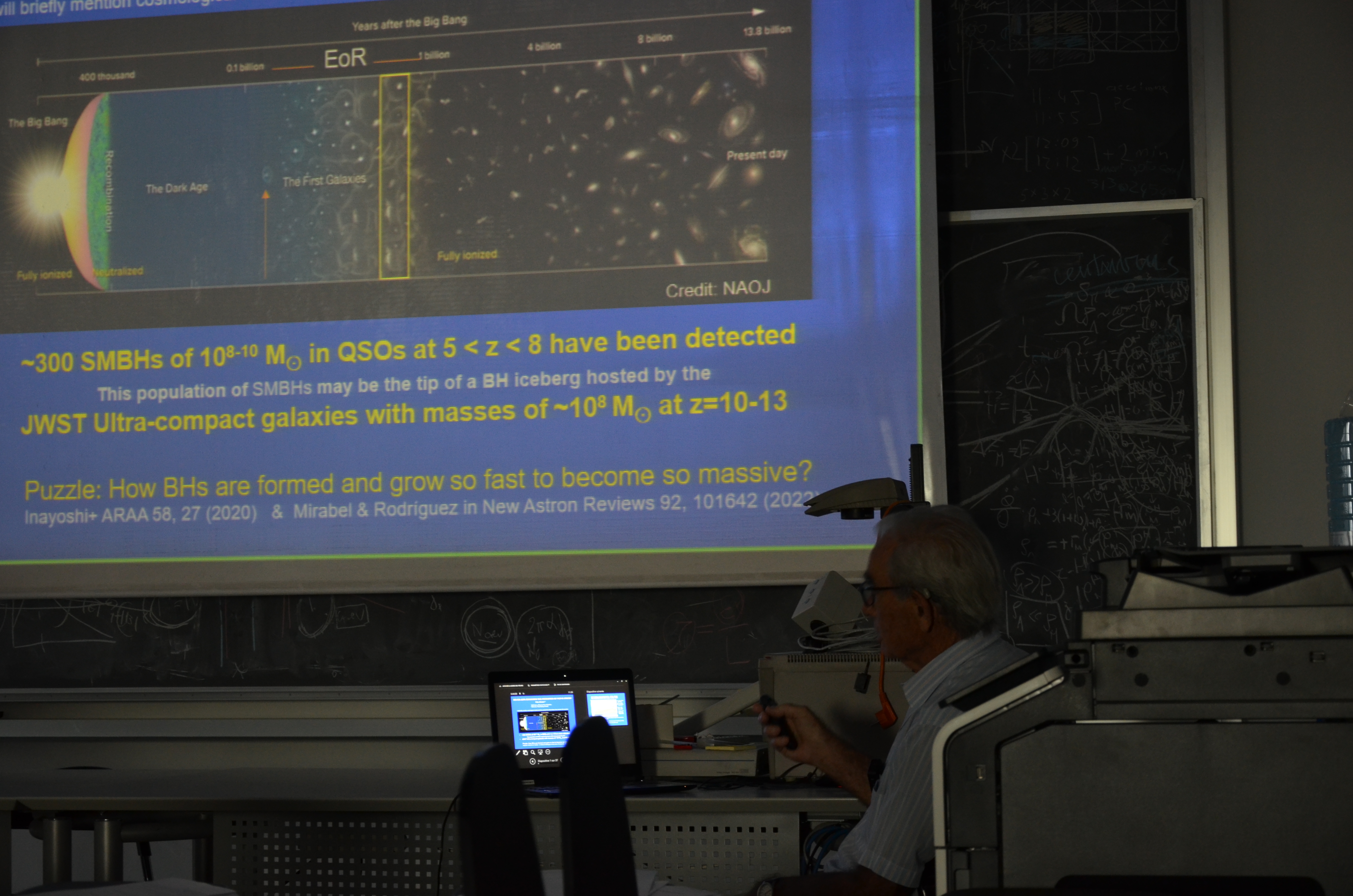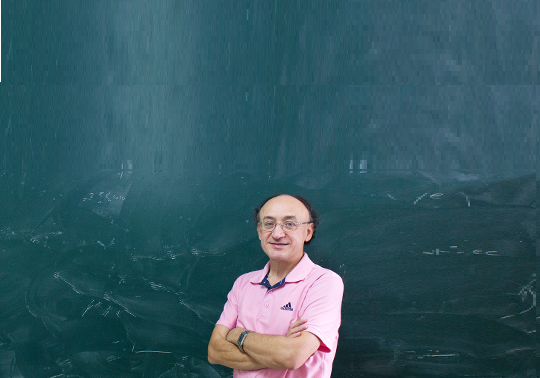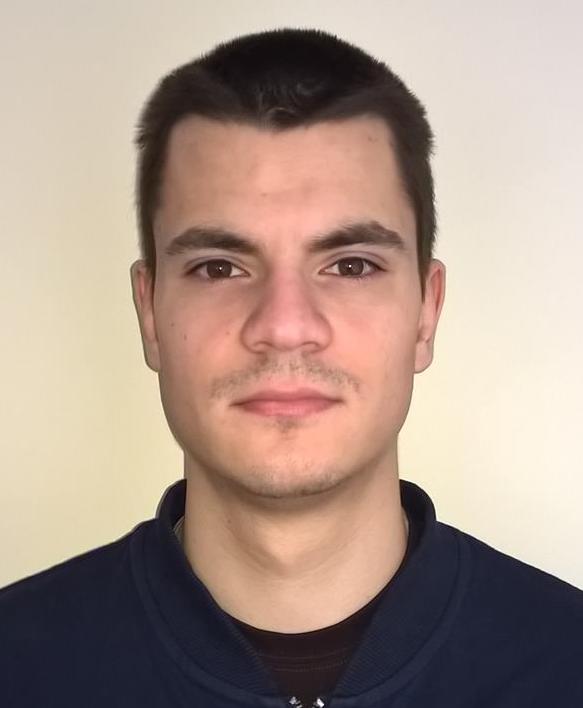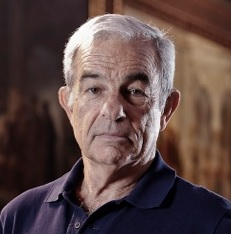

| Newsletter French June-July-August 2023 |

|

|



ICRANet Newsletter
2014 -
2015 -
2016
2017 - 2018 - 2019 2020 - 2021 - 2022 2023 February/March - April/May - June/July/August - September/October
Bulletin ICRANet
Juin – Juillet – Aout 2023
RÉSUMÉ
1. Communiqué de presse ICRA-ICRANET “GRB-SN Association within the Binary-Driven Hypernova Model” 2. Le 5ème Zeldovich meeting, 12-16 Juin 2023, Erevan (Arménie) 3. La 18ème Rencontre Italo-coréenne sur l'astrophysique relativiste (IK18), 19 – 23 Juin 2023, Pescara (Italie) 4. Participation d’ICRANet à la “XV Conférence internationale sur la Gravitation, l'astrophysique et la Cosmologie (ICGAC15)”, 3-7 Juillet 2023, APCTP, Gyeongju (Corée du Sud) 5. Participation d’ICRANet au meeting “Le télescope spatial James Webb fête son premier anniversaire: la naissance et la croissance des galaxies”, 10-14 Juillet 2023, Sesto (Italie) 6. Nouveau protocole de coopération ICRANet – Université Epoka, 9 Juin 2023 7. Nouveau protocole de coopération ICRANet – Archimedes ECA, 31 Juillet 2023 8.Renouvellement du protocole de coopération ICRANet – Universidade Federal da Paraíba (UFPB), 7 Juin 2023 9. Séminaire du Prof. Felix Mirabel auprès du centre ICRANet à Pescara, 27 Juillet 2023 10. Visites scientifiques auprès d’ICRANet 11. Publications récentes
1. Communiqué de presse ICRA-ICRANET “GRB-SN Association within the
Binary-Driven Hypernova Model”
Long gamma-ray bursts (GRBs), in a few seconds, release luminosities (in gamma-rays) comparable to the luminosity of all stars in the observable Universe, which makes them detectable to the dawn of galaxy and stellar formation. One of the most striking observational properties of some of these sources is that they are accompanied by a supernova (SN) of type Ic, traditionally called GRB SN association or connection. The GRB-SN association, probably the most constraining property of GRB theoretical models, is the subject of a new article by an ICRA-ICRANet collaboration, accepted for publication in The Astrophysical Journal [ApJ, 955 (2023) 93]:https://doi.org/10.3847/1538-4357/ace721.
SNe Ic are considered part of the so-called core-collapse SNe, thought to occur in the gravitationalcollapse of the iron core of an evolved star, forming a neutron star (NS). The outer layers are expelledbecause the energy released from the core collapse exceeds their binding energy. On the other hand,long GRBs are mostly thought to be related to events forming stellar-mass black holes (BHs). Therefore,it appears difficult to render the two above theories compatible to produce a GRB-SN by a single object.The new research deepens into this matter, highlighting observational and theoretical facts revealing thepossible role of binaries in these sources. Indeed, it lists some facts that conspicuously evidence thatmost (if not all) GRB-SN should occur in binaries:
From the modeling viewpoint, the publication focuses on the binary-driven hypernova (BdHN) scenario.In the BdHN model, the GRB-SN event occurs in binary composed of a carbon-oxygen (CO) star and anNS companion. The core of the CO star collapses, generating a newborn NS and the supernova. Thesupernova triggers the GRB-observed episodes whose physical processes are scrutinized. The CO-NSfates explain the diversity of GRBs: BdHNe I are the most extreme with energies 1052 –1054 erg. Theirorbital periods are about 5–10 minutes. In these sources, the material ejected in the SN is easily accretedby the NS companion, so it reaches the point of gravitational collapse, forming a rotating BH. In BdHNeII, the orbital period is 20–40 minutes and emit energies 1052 –1054 erg. The accretion is lower, so the NSremains stable. BdHN III have an orbital period of hours, and the accretion is negligible. They explain GRBs with energies lower than 1050 erg. The new article features the BdHN frontier multimessenger physics and astrophysics: emission of neutrinos, gravitational waves, and electromagnetic radiation from the radio to the X-rays, to the gamma-rays, to the GeV, to the TeV, to ultra-high-energy cosmic rays (UHECRs). These occur in seven episodes, identified via time-resolved analysis of observational data, probing new physical ultrarelativistic regimes previously unknown in our galaxy. Attention is given to the first episode, the early SN explosion originating from the 10M⊙ CO core collapse (SN-rise), and to the second episode, the accretion of the SN ejecta on the νNS (νNS-rise). The BH formation occurs by accretion of the SN ejecta on the companion NS, rather than the direct massive star collapse, and originates the associated MeV and GeV emission. The energetics are determined by the rotational energy extraction from a Kerr BH originating overcritical electromagnetic fields leading to an ultra-relativistic expanding e+ e− plasma that loads baryons from the ambient and manifests when it reaches transparency in the third episode, the UPE (ultrarelativistic prompt emission). The corresponding process in the under critical regimes occurring in a test electromagnetic field alignedì with the BH rotation axis leads to the GeV emission, the fourth episode. The fifth Episode addressed the νNS emission with associated synchrotron emission in the X-rays, optical, and radio bands, followed by the sixth and seventh episodes given the Gamma-ray and X-ray flares. The optical radioactive decay of the SN ashes finally follows these seven episodes. Specific examples are given by the SPH simulations performed in collaboration with Los Alamos National Laboratory (see Fig. 1). The energetics of selected BdHNe types and the peak luminosity and time of the 24 SNe are compared and contrasted (see Fig. 2). The cases of two BdHNe I are analyzed in detail (GRB 180720B and GRB 190114C, see Fig. 3). For BdHNe II, the paper describes GRB190829A, and for BdHNe III, GRB171205A. The unveiled details of the GRB episodes auspices a new era: to use the strongest high-energy sources on planet Earth, such as the European Hard X-ray Free Electron Laser (XFEL) operated by DESY at Hamburg and, for the TeV radiation, the accelerators of the European Organization for Nuclear Research (CERN) in Geneva, in order to perform the diagnosis of GRB physics. Reference article: “GRB-SN Association within the Binary-Driven Hypernova Model”; Aimuratov, Y.; Becerra, L. M.; Bianco, C. L.; Cherubini, C.; Della Valle, M.; Filippi, S.; Li, Liang; Moradi, R.; Rastegarnia, F.; Rueda, J. A.; Ruffini, R.; Sahakyan, N.; Wang, Y.; Zhang, S. R.; ApJ, 955 (2023) 93; DOI:https://doi.org/10.3847/1538-4357/ace721
2. Le 5ème Zeldovich meeting, 12-16 Juin 2023, Erevan (Arménie)
Le 5ème meeting Zeldovich, organisé par l’ICRANet, est une conférence internationale en l'honneur de Ya. B. Zeldovich, qui s'est tenue à l'hôtel Ani Plaza à Erevan (Arménie) du 12 au 16 Juin 2023. Cet événement a également commémoré le 80ème anniversaire de l’Académie nationale des sciences de la République d'Arménie, dont les membres ont apporté des contributions tout aussi fondamentales au domaine de l'astrophysique relativiste.
Le meeting a commence lundi 12 Juin par les discours inaugural du Prof. Remo Ruffini (Directeur d’ICRANet), du Prof. Narek Sahakyan (Directeur du centre ICRANet en Arménie) et de S.E. Hakob Arshakyan, Vice Présidente de l’Assemblée Nationale d'Arménie, en présence d'autorités éminentes, telles que S. E. Vahe Gevorgyan, Sous-ministre des affaires étrangères d’Arménie, S.E. Ashot Saghyan, Présidente de l’Académie nationale des sciences, S.E. Avet Poghosyan, Sous-ministre de l'industrie de haute technologie de l'Arménie, S.E. Alfonso Di Riso, Ambassadeur d’Italie en Arménie, ainsi que Mme Nilakshi Saha Sinha, Ambassadeur d’Inde en Arménie. S.E. Arshakyan a souligné la richesse historique de l'Arménie en matière de réalisations et de découvertes scientifiques, notamment dans les domaines de l'astrophysique, des mathématiques et de la physique. Il a également souligné la forte participation des institutions scientifiques arméniennes à des programmes similaires ainsi que le rôle de premier plan joué par l'Académie nationale arménienne des sciences dans ce domaine. Le vice-ministre Vahe Gevorgyan a souligné le rôle d'ICRANet en tant que plateforme importante pour la coopération internationale et a noté que l'organisation de cette prestigieuse conférence internationale est une étape importante pour le développement du domaine de l'astrophysique pas seulement en Arménie, mais aussi dans tous les pays participants.
Pendant la cérémonie d'ouverture, le scientifique
russe Marat Glifanov a reçu le prix MG16
Marcel Grossmann au nom de l'Institut de
recherche spatiale (IKI) de l'Académie des
Sciences de Russie. Le prix a été remis par
Remo Ruffini, Directeur d'ICRANet, pour le
satellite Spektr-RG/eROSITA.
Plus de 100 participants de 17 pays différents
ont participé à la conférence et présenté, au total,
75 exposés sur les résultats récents les plus
pertinents en matière d'astrophysique
multimessage, d'univers primitif, de structure à
grande échelle, de fond diffus cosmologique,
d'étoiles à neutrons, de trous noirs, de sursauts
gamma, de supernovae, d'hypernovae, d'ondes
gravitationnelles, de gravité quantique et de
gravité.
De nouveaux résultats sur les principaux projets
spatiaux des observatoires astrophysiques
terrestres et spatiaux ont également été présentés,
tels que: le télescope spatial James Webb JWST
(etats-Unis), présenté par le Prof. Massimo
Stiavelli et le Prof. Garth Illingworth; le
radiotélescope FAST (Chine), l'observatoire de
rayons X Insight-HXMT (Chine) ainsi que
l'observatoire de particules de haute énergie
LHAASO (Chine), présentés pour la première fois
par le Prof. Zha Min, le Prof. Li Di et le Prof.
Shuang-Nan Zhang; les télescopes Cherenkov
MAGIC (Allemagne), le télescope à rayons
gamma DAMPE (Chine et Italie), le polarimètre à
rayons X IXPE (États-Unis et Italie),
l'observatoire à rayons X Spektr-RG (Russie et Allemagne, présenté par les professeurs Rashid Sunyaev
et Marat Gilfanov), le réseau de télescopes robotisés MASTER (Russie), les observatoires de neutrinos
ICECube (Antarctique) et Baikal-GVD (Russie) ainsi que les missions prévues: eXTP (enhanced X-ray
Timing and Polarimetry mission) et le télescope germano-brésilien-italien-terrestre rayons gamma
SWGO
A l'occasion de la conférence, le mercredi 14 Juin, le Président de la République d'Arménie S.E. Vahagn
Khachaturyan a reçu une délégation de participants et d'organisateurs du 5ème Zeldovich meeting. Cette
délégation était composée par le Prof. Remo Ruffini, le Prof. Narek Sahakyan, l’Académicien Ashot
Saghyan (Président du NAS RA), le Prof. Shuang-Nan Zhang (Centre d'astrophysique des particules,
Institut de physique des hautes énergies, CAS), le Prof. Di Li (Observatoires astronomiques nationaux,
Académie chinoise des sciences), le Prof. Tsvi Piran (Université hébraïque de Jérusalem), le Prof. Paolo
Soffitta (INAF IAPS) et le Prof. Alexei Starobinsky (Institut Landau de physique théorique RAS). Le
Président Khachaturyan a apprécié l'organisation de tels événements et a exprimé sa volonté de soutenir
au mieux les programmes et les initiatives dans le domaine de la science, soulignant l'importance des
activités d'ICRANet en Arménie. Le Prof. Ruffini s’est félicité de la coopération avec l'Arménie et a
noté l'intention de mettre en œuvre de nouveaux programmes avec les pays d'Asie centrale via
l'Arménie. Tous les interlocuteurs ont discuté des possibilités de mise en œuvre de programmes
conjoints et d'approfondissement de la coopération avec les principaux centres, organisations et
universités du monde, tels qu'ICRANet.
Tous les résumés soumis pour la conférence ont été rassemblés dans le livre des résumés, disponible sur
le site web de la conférence au lien suivant:https://indico.icranet.org/event/6/book-of-abstract.pdf
Les remarques finales, résumant les nouveaux et importants résultats scientifiques présentés lors de la
réunion, ont été formulées par le Prof. Remo Ruffini et le Prof. Narek Sahakyan.
Les proceedings du 5ème Zeldovich meeting seront publiés dans la revue avec arbitrage de lecture
Astronomy Reports, la principale revue russe sur l'astronomie et l'astrophysique à haut facteur d'impact
(pour le site web de la revue:https://www.springer.com/journal/11444)Les rédacteurs seront le Prof.
Remo Ruffini, le Prof. Narek Sahakyan et le Prof. Gregory Vereshchagin.
Ce meeting était la 5ème conférence internationale consacrée à Ya. B. Zeldovich. Les réunions
précédentes ont eu lieu du 23 au 27 Avril 2018 à Minsk, du 20 au 23 Avril 2009 à Minsk (organisée
conjointement par ICRANet et l'Université d'État biélorusse BSU, célébrant également l'année 2009 de
l'astronomie), du 11 au 14 Mars 2014 (célébrant le 100ème anniversaire de Ya. B. Zeldovich) et du 7 au
11 Septembre 2020 en ligne
Les enregistrements de toutes les sessions sont disponibles sur le canal YouTube d’ICRANet au lien
suivant:https://www.youtube.com/watch?v=cQuXRbnJ6o4&list=PLr5RLbSWSonvawHlYpDVmRJIUoPHtopw7
Pour le site web du meeting et les présentations des orateurs:http://www.icranet.org/zeldovich5
Pour le communiqué de presse sur le site web de l’Assemblée nationale de la République d'Arménie:http://www.parliament.am/news.php?cat_id=2&NewsID=18950&year=2023&month=06&day=12&lang=arm&e nc=utf8
Pour le communiqué de presse sur le site web de la Radio publique d’Arménie: http://www.parliament.am/news.php?cat_id=2&NewsID=18950&year=2023&month=06&day=12&lang=arm&enc=utf8
Pour le communiqué de presse sur le site web de Armen Press:https://armenpress.am/eng/news/1113073/
Pour le communiqué de presse sur le site web de la NAS RA:https://www.sci.am/m/newsview.php?id=706&arch=&langid=2
Pour le communiqué de presse sur le site web de la Présidence de la République d’Arménie: https://www.president.am/en/press-release/item/2023/06/14/President-Vahagn-Khachaturyan/
Pour la vidéo sur le canal YouTube du Parlement arménien: https://www.youtube.com/watch?v=foQYriAY0Ck&t=107s
3. La 18ème Rencontre Italo-coréenne sur l'astrophysique relativiste (IK18), 19 –
23 Juin 2023, Pescara (Italie)
La 18ème Rencontre Italo-coréenne sur
l'astrophysique relativiste (IK18) a eu
lieu du 19 au 23 Juin 2023 auprès du
centre ICRANet à Pescara et en ligne. Le
meeting a été co-organisé par
l’Université nationale de Kunsan,
CQUeST et l’Université de Sogang (du
côté coréen) et, du côté italien, par
l’ICRANet. Les symposiums Italo-
coréens sur l'astrophysique relativiste
sont une série de réunions biannuelles,
organisées alternativement en Italie et en
Corée depuis 1987. L'objectif principal
de ce symposium est d'accélérer les
échanges entre les scientifiques italiens et
coréens, en particulier les jeunes
chercheurs.
Les membres du Comité italien IK18 étaient Remo Ruffini (Directeur d’ICRANet, ICRA), Carlo
Luciano Bianco (ICRA, ICRANet), Massimo Della Valle (Observatoire astronomique de Capodimonte,
INAF, ICRANet), Luca Izzo (Observatoire astronomique de Capodimonte, INAF), Paolo Giommi
(ASI), Roy Patrick Kerr (ICRANet), Liang Li (ICRANet), Rahim Moradi (ICRANet), Jorge A. Rueda
H. (ICRANet, Université de Ferrara), Narek Sahakyan (Directeur du centre ICRANet en Arménie),
Gregory Vereshchagin (ICRANet), Yu Wang (ICRANet) et Shesheng Xue (ICRANet). Les membres du
Comité coréen IK18 étaient Stefano Scopel (CQUeST, Université de Sogang), Bum-Hoon Lee
(CQUeST, Université de Sogang), Sang Pyo Kim (Université national de Kunsan), Sung-WonKin
(Université Ehwa), Wonwoo Lee (CQUeST, Université de Sogang), Hyeong Chan Kim (AIP) et Lee
Heongwon.
Les thèmes abordés lors des symposiums de l'IK étaient traditionnellement l'astrophysique et la
cosmologie, les sursauts gamma, les objets compacts des rayons cosmiques de haute énergie, l'énergie
noire et la matière noire, la relativité générale, les trous noirs et la nouvelle physique liée à la
cosmologie. Cette année, l'accent a été mis sur la masse irréductible, l'émission d'ondes gravitationnelles
par les GRB ainsi que les configurations ellipsoïdales d'équilibre dans la relativité générale. Les
développements scientifiques les plus récents ont été présentés par d'éminents professeurs et chercheurs
Les remarques d'ouverture ont été présentées par le Prof. Remo Ruffini et le Prof. Stefano Scopel. Les
orateurs étaient le Prof. Dong-Hoon Kim, le Prof. Wonwoo Lee, le Prof. Sang Pyo Kim, le Prof. Stefano
Scopel, le Prof. Dong-hun Lee, le Prof. Chanyong Park, le Prof. Chan Park, le Prof. Bum-Hoon Lee, le
Prof. Sung-Won Kim, le Prof. Remo Ruffini, le Prof. Carlo Luciano Bianco, le Prof. Gregory
Vereshchagin, le Prof. Massimo Della Valle, le Prof. Lorenzo Amati, le Prof. Jorge Rueda, le Prof.
Rahim Moradi, le Prof. Yu Wang, le Prof. Antonio Enea Romano, Shurui Zhang, le Dr Josè Fernando
Rodriguez Ruiz, le Prof. Shesheng Xue, le Prof. Muhammad Sharif et Abdel Nasser Tawfik
Pour plus d'informations sur la rencontre: https://indico.icranet.org/event/7/
4. Participation d’ICRANet à la “XV Conférence internationale sur la
Gravitation, l'astrophysique et la Cosmologie (ICGAC15)”, 3-7 Juillet 2023,
APCTP, Gyeongju (Corée du Sud)
Le 7 Juillet 2023, le Prof. Ruffini (Directeur d’ICRANet) a
été invitées à présenter une conférence plénière à l’occasion
de l’édition 2023 de la XV Conférence internationale sur la
Gravitation, l'astrophysique et la Cosmologie (ICGAC15),
qui a eu lieu à Gyeongju (Corée du Sud) et en ligne du 3 au
7 Juillet 2023.
Le vendredi 7 Juillet, le Prof. Ruffini a présenté sa
conférence plénière titrée “GRB 220101A: the most
powerful GRB with seven BdHN Episodes observed”.
Le Prof. Ruffini était aussi un membre du Comité
permanent international, du Comité consultatif international
ainsi que du Comité scientifique de l’ICGAC15
ICGAC is the series of triennial conferences on Gravitation, Astrophysics and Cosmology which take place in the Asia- Pacific region, with the goals to promote cooperation among the member countries and within an international context, high level studies on hot topics and to encourage young physicists on these fields. This conference has been one of the key programs sponsored by APCTP over the past twenty years and has been hosted by AP regions: Seoul, Korea (1993); Hsinchu, Taiwan (1995); Tokyo, Japan(1997); Beijing, China (1999); Moscow, Russia (2001); Seoul, Korea (2003); Jhongli, Taiwan (2005); Nara, Japan (2007); Wuhan, China (2009); Qui-Nhon, Vietnam (2011); Almaty, Kazakhstan (2013); Moscow, Russia (2015), Seoul, Korea (2017) and Taiwan (2020).
L’ICGAC est une série de conférences triennales sur la
gravitation, l'astrophysique et la cosmologie qui ont lieu
dans la région Asie-Pacifique, ayant comme but la
promotion de la coopération entre les pays membres et dans
un contexte international, des études de haut niveau sur des
sujets brûlants, ainsi que l’encouragement des jeunes
physiciens dans ces domaines. Cette conférence a été l'un
des principaux programmes parrainés par le APCTP au cours des vingt dernières années et a été
accueillie par les régions de l'AP: Séoul, Corée (1993); Hsinchu, Taiwan (1995); Tokyo, Japon (1997);
Pékin, Chine (1999); Moscou, Russie (2001); Séoul, Corée (2003); Jhongli, Taiwan (2005); Nara, Japon
(2007); Wuhan, Chine (2009); Qui-Nhon, Vietnam (2011); Almaty, Kazakhstan (2013); Moscou, Russie
(2015); Séoul, Corée (2017) et Taiwan (2020).
Les principaux sujets abordés lors du meeting ICGAC15 comprenaient la gravité classique et les
extensions de la RG, la cosmologie classique et quantique, la matière noire et l'énergie noire, les trous
noirs, les trous de ver, les cordes cosmiques, les branes, les champs de spin élevé et la gravité quantique,
les dimensions supplémentaires et la variation des constantes, les études expérimentales de la gravité et
les projets spatiaux de physique fondamentale, les ondes gravitationnelles, l’astronomie multi-
messagers, la relativité numérique, l’astrophysique relativiste, les naines blanches, les étoiles à neutrons
et les sursauts gamma, ainsi que la théorie alternative et l’éducation.
Pour le site web du meeting:https://www.apctp.org/theme/d/html/activities/activities01_read-pop.php?id=1801&m_id=212
5. Participation d’ICRANet au meeting “Le télescope spatial James Webb fête son
premier anniversaire: la naissance et la croissance des galaxies”, 10-14 Juillet
2023, Sesto (Italie)
Le 10 Juillet 2023, le Prof. Remo Ruffini (Directeur d’ICRANet) a pris partie à la journée d’ouverture
du meeting “ Le télescope spatial James Webb fête son premier anniversaire: la naissance et la
croissance des galaxies ”, qui a eu lieu du 10 au 14 Juillet dans le Centre d'astrophysique de Sesto
Riccardo Giacconi (Italie)
Un an après la publication des premières données du télescope spatial James Webb, la réunion avait
pour but de rassembler les scientifiques, chercheurs et étudiants concernés afin de discuter des
transformations scientifiques permises par les observations du télescope Webb dans le domaine de la
formation et de l'évolution des galaxies, depuis les premiers stades jusqu'aux phases les plus matures de
l'histoire cosmique. Les principaux sujets abordés lors de la réunion ont été le processus de formation
des premières étoiles, la poussière et le milieu circumgalactique dans les galaxies lointaines, l'histoire de
la ré ionisation, la croissance de la masse des galaxies et l'évolution morphologique précoce, ainsi que
l'activité des AGN à un redshift élevé.
Après la cérémonie d'ouverture, le premier jour de la réunion a été principalement consacré à une
présentation de l'état d'avancement et de l'aperçu des résultats du JWST, ainsi que des premiers résultats
sur la formation et l'évolution des galaxies précoces obtenus grâce aux relevés du JWST.
Pour le site web du meeting: https://www.sexten-cfa.eu/event/jwebb23/
6. Nouveau protocole de coopération ICRANet – Université Epoka, 9 Juin 2023
Le 9 Juin 2023, l’ICRANet a signé un nouveau
protocole de coopération avec l’Université Epoka en
Albanie. Ce protocole de coopération a été signé par
le Prof. Ahmet Öztaş (Recteur de l’Université
Epoka), le Prof. Arban Uka (Université Epoka), par
le Prof. Remo Ruffini (Directeur d’ICRANet) et par
le Prof. Jorge A. Rueda (Professeur de la Faculté)
Ce
protocole demeurera valide pour 5 années et les
principales activités conjointes qui seront
développées dans le cadre de cet accord comptent: la
promotion des activités de recherche et d'observation dans le champ de l'astrophysique relativiste; la
collaboration entre des membres de la Faculté, des chercheurs, des post-doctorat fellows et des
étudiants; l'organisation de séminaires, conférences, workshops, cours de formations et de recherche, et
publications conjointes.
Pour le texte du protocole:http://www.icranet.org/index.php?option=com_content&task=view&id=1493
7. Nouveau protocole de coopération ICRANet – Archimedes ECA, 31 Juillet
2023
Le 31 Juillet 2023, l’ICRANet a signé un nouveau
protocole de coopération avec l’association
Archimedes ECA en France. Ce protocole de
coopération a été signé par le Prof. Joseph Kouneiher
(Président de Archimedes ECA) et par le Prof. Remo
Ruffini (Directeur d’ICRANet).
Ce protocole demeurera valide pour 5 années et les
principales activités conjointes qui seront
développées dans le cadre de cet accord comptent: la
promotion des activités de recherche et d'observation
dans le champ de l'astrophysique relativiste; la collaboration entre des membres de la Faculté, des
chercheurs, des post-doctorat fellows et des étudiants; l'organisation de séminaires, conférences,
workshops, cours de formations et de recherche, et publications conjointes.
Pour le texte du protocole: http://www.icranet.org/index.php?option=com_content&task=view&id=1499
8. Renouvellement du protocole de coopération ICRANet – Universidade
Federal da Paraíba (UFPB), 7 Juin 2023
Le 7 Juin 2023, le Protocole de Coopération entre
l'ICRANet et l’Universidade Federal da Paraíba (UFPB) a
été renouvelé. Le renouvellement a été signé par le Prof.
Valdiney Neloso Gouveia (Recteur de l’UFPB) et par le
Prof. Remo Ruffini (Directeur d’ICRANet). Ce protocole
demeurera valide pour 5 années et les principales activités
conjointes qui seront développées dans le cadre de cet
accord comptent: la promotion des activités de recherche et d'observation dans le champ de
l'astrophysique relativiste; la collaboration entre des membres de la Faculté, des chercheurs, des post-
doctorat fellows et des étudiants; l'organisation de séminaires, conférences, workshops, cours de
formations et de recherche, et publications conjointes
Pour le texte du protocole:http://www.icranet.org/index.php?option=com_content&task=view&id=1019
9. Séminaire du Prof. Felix Mirabel auprès du centre ICRANet à Pescara, 27
Juillet 2023
Le jeudi 27 Juillet 2023, le Prof. Felix Mirabel (IAFE- Université de Buenos Aires et CEA-Saclay) a
présenté un séminaire titré “Did Black hole-jets enhancedthe formation of Pop-III stars at cosmic
dawn?” ; voici ci-dessous le résumé
The existence of supermassive black holes (SMBHs) of 10^9 solar masses in quasars at cosmic ages of less than 700 Myr is an intriguing puzzle. How the seeds of these SMBHs have formed and grown so fast to become so large? Models of the compact seeds of the SMBHs observed at redshifts z > 6 propose in the context of dark matter cosmologies those seeds are formed by direct collapse in dark matter haloes. I will show that recent high-z ALMA and JWST observations are consistent with the astrophysical hypotheses in those models. Finally, integrating those recent theoretical and observational contexts, with past extensive studies of the environments of BH-jets in the local and distant universe, I will conclude that the relativistic jets and associated massive outflows from rapidly growing BHs at cosmic dawn must have enhanced the formation of Pop-III massive stars.
L'annonce du séminaire a été aussi publié sur le site web d'ICRANet:https://www.icranet.org/index.php?option=com_content&task=blogcategory&id=89&Itemid=781
Pour la vidéo du séminaire: https://www.youtube.com/watch?v=H9_cGdVT35A
10. Visites scientifiques auprès d’ICRANet
Pendant leur visite, ils ont eu l'opportunité de discuter de leur travaux de recherché et d'avoir des
intéressants échanges d'opinion avec les autres chercheurs ICRANet de toutes les parties du monde
11.Publications récentes
Y. Aimuratov, L. M. Becerra, C.L. Bianco, C. Cherubini, M. Della Valle, S. Filippi, Liang Li, R. Moradi, F. Rastegarnia, J. A. Rueda, R. Ruffini, N. Sahakyan, Y. Wang, S. R. Zhang, GRB-SN Association within the Binary-Driven Hypernova Model, accepted for publication in The Astrophysical Journal.
The observations of supernovae (SNe) Ic occurring after the prompt emission of long gamma-ray bursts (GRBs) are addressed within the binary-driven hypernova (BdHN) model where GRBs originate from a binary composed of a ∼10M ⊙ carbon-oxygen (CO) star and a neutron star (NS). The CO core collapse gives the trigger, leading to a hypernova with a fast-spinning newborn NS (νNS) at its center. The evolution depends strongly on the binary period, Pbin. For Pbin∼5min, BdHNe I occur with energies 1052 -1054 erg. The accretion of SN ejecta onto the NS leads to its collapse, forming a black hole (BH) originating the MeV/GeV radiation. For Pbin∼10min, BdHNe II occur with energies 1050 -1052 erg and for Pbin∼hours, BdHN III occurs with energies below 1050 erg. {In BdHNe II and III,} no BH is formed. The 1-1000ms νNS originates, in all BdHNe, the X-ray-optical-radio afterglows by synchrotron emission. The hypernova follows an independent evolution, becoming an SN Ic, powered by nickel decay, observable after the GRB prompt emission. We report 24 SNeIc associated with BdHNe. Their optical peak luminosity and time of occurrence are similar and independent of the associated GRBs. {From previously identified 380 BdHN I comprising redshifts up to z=8.2, we analyze} four examples with their associated hypernovae. By multiwavelength extragalactic observations, we identify seven new Episodes, theoretically explained, fortunately not yet detected in galactic sources, opening new research areas. Refinement of population synthesis simulations is needed to map the progenitors of such short- lived binary systems inside our galaxy.
Antonio Enea Romano, Mairi Sakellariadou, Mirage of Luminal Modified Gravitational-Wave Propagation, publish in Phys. Rev. Lett. 130, 231401 on June 8, 2023.
Using conformal invariance of gravitational waves, we show that for a luminal modified gravity theory, the gravitational-wave propagation and luminosity distance are the same as in general relativity. The relation between the gravitational-wave and electromagnetic-wave luminosity distance gets modified, however, for electromagnetism minimally coupled to the Jordan frame metric. Using effective field theory we show that the modified relation obtained for luminal theories is also valid for nonluminal theories with Jordan frame matter-gravity coupling. We generalize our analysis to a time-dependent speed of gravitational waves with matter minimally coupled to either the Jordan or Einstein frame metrics.
Laura M. Becerra, Chris Fryer, Jose F. Rodriguez, Jorge A. Rueda and Remo Ruffini, Neutron Star Binaries Produced by Binary-Driven Hypernovae, Their Mergers, and the Link between Long and Short GRBs, published in Universe 2023, 9(7), 332 on July 12, 2023.
The binary-driven hypernova (BdHN) model explains long gamma-ray bursts (GRBs) associated with supernovae (SNe) Ic through physical episodes that occur in a binary composed of a carbon-oxygen (CO) star and a neutron star (NS) companion in close orbit. The CO core collapse triggers the cataclysmic event, originating the SN and a newborn NS (hereafter 𝜈𝜈NS) at its center. The 𝜈𝜈NS and the NS accrete SN matter. BdHNe are classified based on the NS companion fate and the GRB energetics, mainly determined by the orbital period. In BdHNe I, the orbital period is of a few minutes, so the accretion causes the NS to collapse into a Kerr black hole (BH), explaining GRBs of energies >1052 erg. BdHN II, with longer periods of tens of minutes, yields a more massive but stable NS, accounting for GRBs of 1050 –1052 erg. BdHNe III have still longer orbital periods (e.g., hours), so the NS companion has a negligible role, which explains GRBs with a lower energy release of <1050 erg. BdHN I and II might remain bound after the SN, so they could form NS-BH and binary NS (BNS), respectively. In BdHN III, the SN likely disrupts the system. We perform numerical simulations of BdHN II to compute the characteristic parameters of the BNS left by them, their mergers, and the associated short GRBs. We obtain the mass of the central remnant, whether it is likely to be a massive NS or a BH, the conditions for disk formation and its mass, and the event’s energy release. The role of the NS nuclear equation of state is outlined.
Jonas P. Pereira and Jorge A. Rueda, Matching Slowly Rotating Spacetimes Split by Dynamic Thin
Shells, published in Universe 2023, 9(7), 305 onJune 24, 2023.
We investigated within the Darmois–Israel thin-shell formalism the match of neutral and asymptotically
flat, slowly rotating spacetimes (up to second order in the rotation parameter) when their boundaries are
dynamic. It has several important applications in general relativistic systems, such as black holes and
neutron stars, which we exemplify. We mostly focused on the stability aspects of slowly rotating thin
shells in equilibrium and the surface degrees of freedom on the hypersurfaces splitting the matched
slowly rotating spacetimes, e.g., surface energy density and surface tension. We show that the stability
upon perturbations in the spherically symmetric case automatically implies stability in the slow rotation
case. In addition, we show that, when matching slowly rotating Kerr spacetimes through thin shells in
equilibrium, the surface degrees of freedom can decrease compared to their Schwarzschild counterparts,
meaning that the energy conditions could be weakened. The frame-dragging aspects of the match of
slowly rotating spacetimes are also briefly discussed.
Vitaliy Kim, Adel Umirbayeva and YerlanAimuratov, Estimates of the Surface Magnetic Field
Strength of Radio Pulsars, published in Universe 2023, 9(7), 334 on July 14, 2023.
We investigate the geometry of the magnetic field of rotation-powered pulsars. A new method for
calculating an angle (𝛽𝛽) between the spin and magnetic dipole axes of a neutron star (NS) in the ejector
stage is considered within the frame of the magnetic dipole energy loss mechanism. We estimate the
surface magnetic field strength (𝐵𝐵ns) for a population of known neutron stars in the radio pulsar
(ejector) stage. The evaluated 𝐵𝐵ns(𝛽𝛽) may differ by an order of magnitude from the values without
considering the angle 𝛽𝛽. It is shown that 𝐵𝐵ns(𝛽𝛽) lies in the range 108 –1014G for a known population of
short and middle periodic radio pulsars.
Mikalai Prakapenia, Gregory Vereshchagin, Pauli blocking effects on pair creation in strong
electric field, published in Phys. Rev. D 108, 013002 on July12, 2023.
The process of electron-positron pair creation and oscillation in a uniform electric field is studied, taking
into account the Pauli exclusion principle. Generally, we find that pair creation is suppressed; hence,
coherent oscillations occur on longer timescales. Considering pair creation in already existing electron-
positron plasma, we find that the dynamics depends on pair distribution function. We considered Fermi-
Dirac distribution of pairs and found that for small temperatures pair creation is suppressed, while for
small chemical potentials it increases: heating leads to enhancement of pair creation.
Roohollah Mohammadi, Jafar Khodagholizadeh, Mahdi Sadegh, Ali Vahedi, She-sheng Xue,
Cross-correlation Power Spectra and Cosmic Birefringence of the CMB via Photon-neutrino
Interaction, published in JCAP 06 (2023) 044 onJune 20, 2023.
In the context of the standard model of particles, the weak interaction of cosmic microwave background (CMB) and cosmic neutrino background (CνB), can generate non-vanishing TB and EB power spectra in the order of one loop forward scattering, in the presence of scalar perturbation, which is in contrast with the standard scenario cosmology. Comparing our results with the current experimental data may provide, significant information about the nature of CνB, including CMB-CνB forward scattering for TB, TE, and EB power spectra. To this end, different cases were studied, including Majorana CνB and Dirac CνB. On the other hand, it was shown that the mean opacity due to cosmic neutrino background could behave as an anisotropic birefringent medium and change the linear polarization rotation angle. Considering the contributions from neutrino and anti-neutrino forward scattering with CMB photons (in the case of Dirac neutrino), we introduce relative neutrino and anti-neutrino density asymmetry (δν = Δnν/nν = nν-n-ν/nν). Then, using the cosmic birefringence angle reported by the Planck data release β = 0.30° ± 0.11° (68%C.L.), some constraints can be put on δν. Also, the value of cosmic birefringence due to Majorana CνB medium is estimated at about β|ν≃ 0.2 rad. In this respect, since Majorana neutrino and anti-neutrino are exactly the same, both CB contributions will be added together. However, this value is at least two orders larger than the cosmic birefringence angle reported by the Planck data release, β = 0.30° ± 0.11° (68%C.L.). Finally, we shortly discussed this big inconsistency. It is noteworthy that to calculate the contribution of photon-neutrino forward scattering for cosmic birefringence, we just consider the standard model of particles and the standard scenario of cosmology.
She-Sheng Xue, Massive particle pair production and oscillation in Friedman Universe: reheating
energy and entropy, and cold dark matter, published in Eur. Phys. J. C (2023) 83: 355.
Suppose that the early Universe starts with a cosmological Λ-term originating from quantum spacetime at the Planck scale. Dark energy drives inflation and reheating by reducing its value for massive particle-antiparticle pairs production and oscillation, resulting in a holographic and massive pair plasma state. The back-and-forth reaction of dark energy and massive pairs slows inflation to its end and starts reheating by rapidly producing stable and unstable pairs. We introduce the Boltzmann-type rate equation describing the back-and-forth reaction. It forms a close set with Friedman equations and reheating equations for unstable pairs decay to relativistic particles. The numerical solutions show preheating, massive pairs dominated and genuine reheating episodes. We obtain the reheating temperature and entropy in terms of the tensor-to-scalar ratio 0c∼10−1 is about a constant in time.
Argüelles, C. R.; Boshkayev, K.; Krut, A.; Nurbakhyt, G.; Rueda, J. A.; Ruffini, R.; Uribe-
Suárez, J. D.; Yunis, R., On the growth of supermassive black holes formed from the gravitational
collapse of fermionic dark matter cores, published in Monthly Notices of the Royal Astronomical
Society, Volume 523, Issue 2 on August 2023.
Observations support the idea that supermassive black holes (SMBHs) power the emission at the centre of active galaxies. However, contrary to stellar-mass BHs, there is a poor understanding of their origin and physical formation channel. In this article, we propose a new process of SMBH formation in the early Universe that is not associated with baryonic matter (massive stars) or primordial cosmology. In this novel approach, SMBH seeds originate from the gravitational collapse of fermionic dense dark matter (DM) cores that arise at the centre of DM haloes as they form. We show that such a DM formation channel can occur before star formation, leading to heavier BH seeds than standard baryonic channels. The SMBH seeds subsequently grow by accretion. We compute the evolution of the mass and angular momentum of the BH using a geodesic general relativistic disc accretion model. We show that these SMBH seeds grow to ∼109–1010M⊙ in the first Gyr of the lifetime of the Universe without invoking unrealistic (or fine-tuned) accretion rates.
B. Eslam Panah, Three-dimensional energy-dependent C-metric: black hole solutions, published in
Physics Letters Bon August 19, 2023.
Considering a three-dimensional C-metric and adding energy-dependent to this spacetime, we first
create a three-dimensional energy-dependent C-metric. Then, we extract accelerating BTZ black hole
solutions in gravity's rainbow. Besides, we show that (A)dS black holes cover by an event horizon that
depends on all the parameters of this theory. Using the definition of Hawking temperature, we obtain the
temperature of these black holes and study the effects of various parameters on this quantity. We find a
critical radius in which the temperature is always positive (negative) before (after) it. Then, we obtain
the entropy of such black holes. Our analysis indicates that there is the same behavior for entropy,
similar to the temperature. Indeed, before (after) the critical radius, the entropy is positive (negative). In
order to study the local stability of such black holes, we calculate the heat capacity. We find two
different behaviors for the heat capacity, which depend on the cosmological energy-dependent constant.
As a final result, accelerating AdS BTZ black holes can satisfy the physical condition and local stability
at the same time.
Li Liang, Revisiting the Spectral Energy Correlations of GRBs with Fermi Data. I. Model-wise
Properties, published in The Astrophysical Journal Supplement Series, Volume 266, Number 2 on
June 5, 2023.
Gamma-ray bursts (GRBs) exhibit a diversity of spectra. Several spectral models (e.g., Band, cutoff power law (CPL), and blackbody) and their hybrid versions (e.g., Band+blackbody) have been widely used to fit the observed GRB spectra. Here, we attempt to collect all the bursts detected by Fermi/GBM with known redshifts from 2008 July to 2022 May, having been motivated to (i) provide a parameter catalog independent of the official Fermi/GBM team and (ii) achieve a "clean" model-based GRB spectral energy correlation analysis. A nearly complete GRB sample is created, containing 153 such bursts (136 long GRBs and 17 short GRBs). Using the sample and by performing detailed spectral analysis and model comparisons, we investigate two GRB spectral energy correlations: the correlation of the cosmological rest-frame peak energy (Ep,z) of the νFν prompt emission spectrum with (i) the isotropic-bolometric-equivalent emission energy Eγ,iso (the Amati relation) and (ii) the isotropic-bolometric-equivalent peak luminosity Lp,iso (the Yonetoku relation). From a linear regression analysis, a tight correlation between Ep,z and Eγ,iso (and Lγ,iso) is found for both Band-like and CPL-like bursts (except for CPL-like long burst Ep,z–Eγ,iso correlation). More interestingly, CPL-like bursts do not fall on the Band-like burst Amati and Yonetoku correlations, suggesting distinct radiation processes, and pointing to the fact that these spectral energy correlations are tightly reliant on the model-wise properties.
Gómez, Gabriel; Rodríguez, José F., New non-Abelian Reissner-Nordström black hole solutions in
the generalized SU(2) Proca theory and some astrophysical implications, published in Phys. Rev. D
108, 024069 on July 31, 2023.
The generalized SU(2) Proca theory is a vector-tensor theory of gravity whose action is invariant under
global transformations of the SU(2) group and includes second-order derivative self-interactions of the
vector field beyond the massive Yang-Mills theory. We find, in particular, that the presence of two
Lagrangian pieces consisting of four gauge fields minimally coupled to gravity gives rise to an exact
Reissner-Nordström black hole solution endowed with two different non-Abelian effective charges that
depend on the specific combination χ=2χ1+χ2 of the respective coupling constants. After studying the
spacetime structure of the black hole, which allows us to characterize the parameter space that preserves
the weak cosmic censorship conjecture, some astrophysical implications of the black hole solutions are
investigated. First, joint analysis of observations of the Event Horizon Telescope’s first images of
Sagittarius A⋆ of our Galaxy and the Keck telescope set the first serious constraint on the free
parameters of the theory beyond the theoretical bounds found. Second, we investigate the accretion
properties of spherical steady flows around this class of non-Abelian Reissner-Nordström black hole.
Specifically, we examine the general conditions under which transonic flow is allowed. An analytical
solution for critical accretion is found in terms of the coupling constant. In addition, we explore the
effect of changing χ on the radial velocity and mass density numerically and show how the extremal
Reissner-Nordström and the standard Schwarzschild solutions as limit cases are achieved. Finally,
working in the fully relativistic regime, an analytical expression for the critical mass accretion rate of a
polytropic fluid onto a black hole is derived. As a main result, we find that the critical accretion rate
efficiency can be noticeably improved compared to the Schwarzschild case for a specific region of the
parameter space where the non-Abelian charge becomes imaginary.
|
||||||||||||||||||||||||||||||||||||||||||||||
|
||

